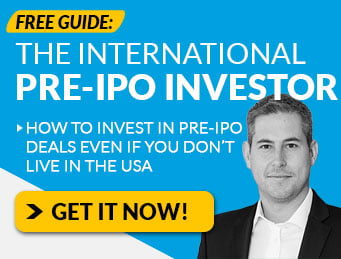
Why? Because investors demand it. That’s why!
According to Bloomberg, this asset class is on track to grow from ~$30 trillion today to $53 trillion by 2025 – more than a third of all assets under management.
For the sixth consecutive calendar year, sustainable funds set an annual record for net flows in 2021. Sustainable funds enjoyed nearly $70 billion in net flows, a 35% increase over 2020’s record. Source: Morningstar
But for years, the ESG movement has been plagued by three key problems…
- a lack of consistency in reporting standards and structure
- incomparability across voluntary reporting frameworks; and
- a heavy reliance on a narrative description of a firm’s commitment to and progress on sustainability.
Put another way, it’s almost impossible for investors to tell if the companies (and funds) claiming to be ESG investments really are.
However, thanks to the SEC’s precedent-breaking proposal for climate disclosures… we’re about to see what could be the most significant regulation in recent history.
According to the SEC’s press release on the matter…
The Securities and Exchange Commission today proposed rule changes that would require registrants to include certain climate-related disclosures in their registration statements and periodic reports, including information about climate-related risks that are reasonably likely to have a material impact on their business, results of operations, or financial condition, and certain climate-related financial statement metrics in a note to their audited financial statements.
The required information about climate-related risks also would include disclosure of a registrant’s greenhouse gas emissions, which have become a commonly used metric to assess a registrant’s exposure to such risks.
For so many reasons, this represents a major turning point for the US Stock market.
Historically speaking, the SEC has made it quite clear that policy decisions should be made by elected officials in the appropriate government branches.
In fact, the previous SEC Chair – Jay Clayton – has lined up alongside many industry groups and their concerns that the rules overstep the powers of the SEC… which is tasked by Congress with investor protection and facilitating capital formation in the U.S. economy.
However, in a media briefing with reporters following the SEC’s Monday meeting, Chair Gary Gensler said the proposed rules would not only help to protect investors but also respond to a barrage of requests for greater clarity about corporate carbon emissions.
To be clear, the SEC has not passed any new laws or changed any regulations at this moment in time.
The suite of rules now enters a 60-day public comment period during which businesses, investors and other market participants can remark on and offer changes to the proposals.
It’s anyone’s guess as to what the final ruling will actually say…
But we think that this shift towards greater transparency – especially around ESG – could mark the beginning of an important phase in any market…
A structural change in supply and demand!
Clearly, there appears to be a very large demand for ESG reporting companies…
And as the demands for reporting emissions down through the supply chain, it likely means that big MegaCorps will put pressure on their suppliers to report emissions data as well.
But what happens if we all look “under the hood” of the supply chain… and there aren’t any companies that can meet the reporting requirements?
In our opinion, this gap in the market represents what may be a huge opportunity for high-growth companies looking for a competitive advantage.
And perhaps more important, it could give more companies an incentive to go public earlier in their lifecycle.
Because right now, the US stock market is declining… and the answer could be more “Small IPOs.”
In 1997, there were 7,414 public companies listed on national exchanges. Today – even after a record 1,000 IPOs in 2021 – there’s barely half that number.
Why? In today’s public markets, it’s hard to survive as a “small cap” stock; The game is “rigged” in favor of the largest companies.
That’s why we decided to host our most recent investor education webinar, “The Post-IPO Growth Plan: What to do when one of your Pre-IPO companies goes public”
If you’re serious about investing in Pre-IPO companies, we believe it’s crucial you understand what happens AFTER they go public…
And what we – as the Equifund community – can do to help our portfolio companies find success in the public markets.
Sincerely,
Jake Hoffberg – Publisher
Equifund













